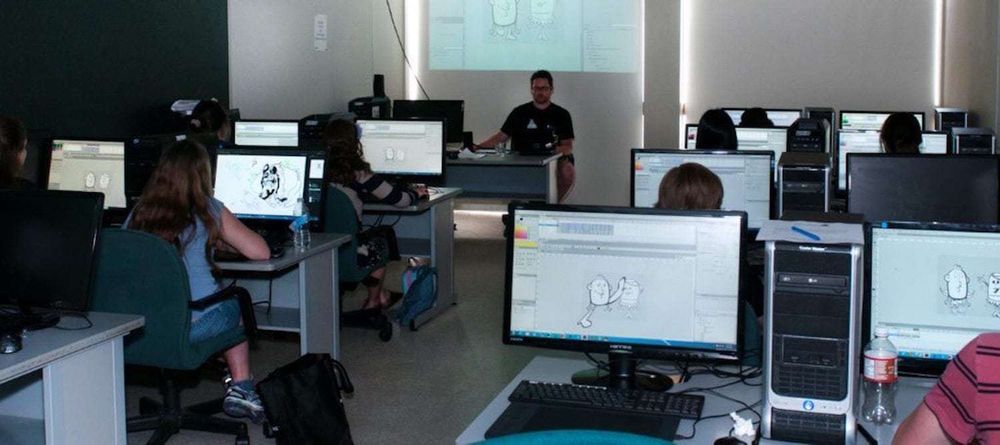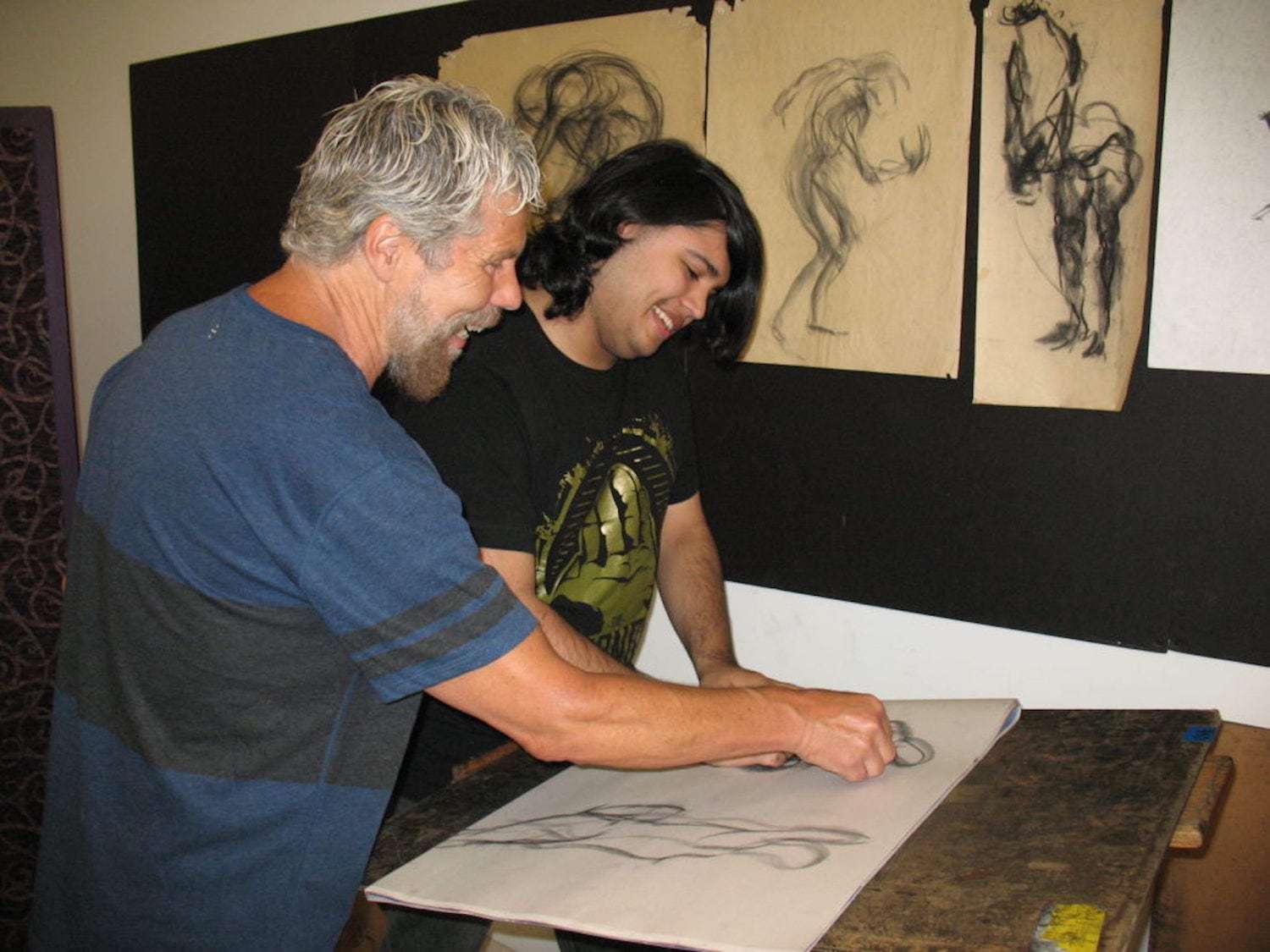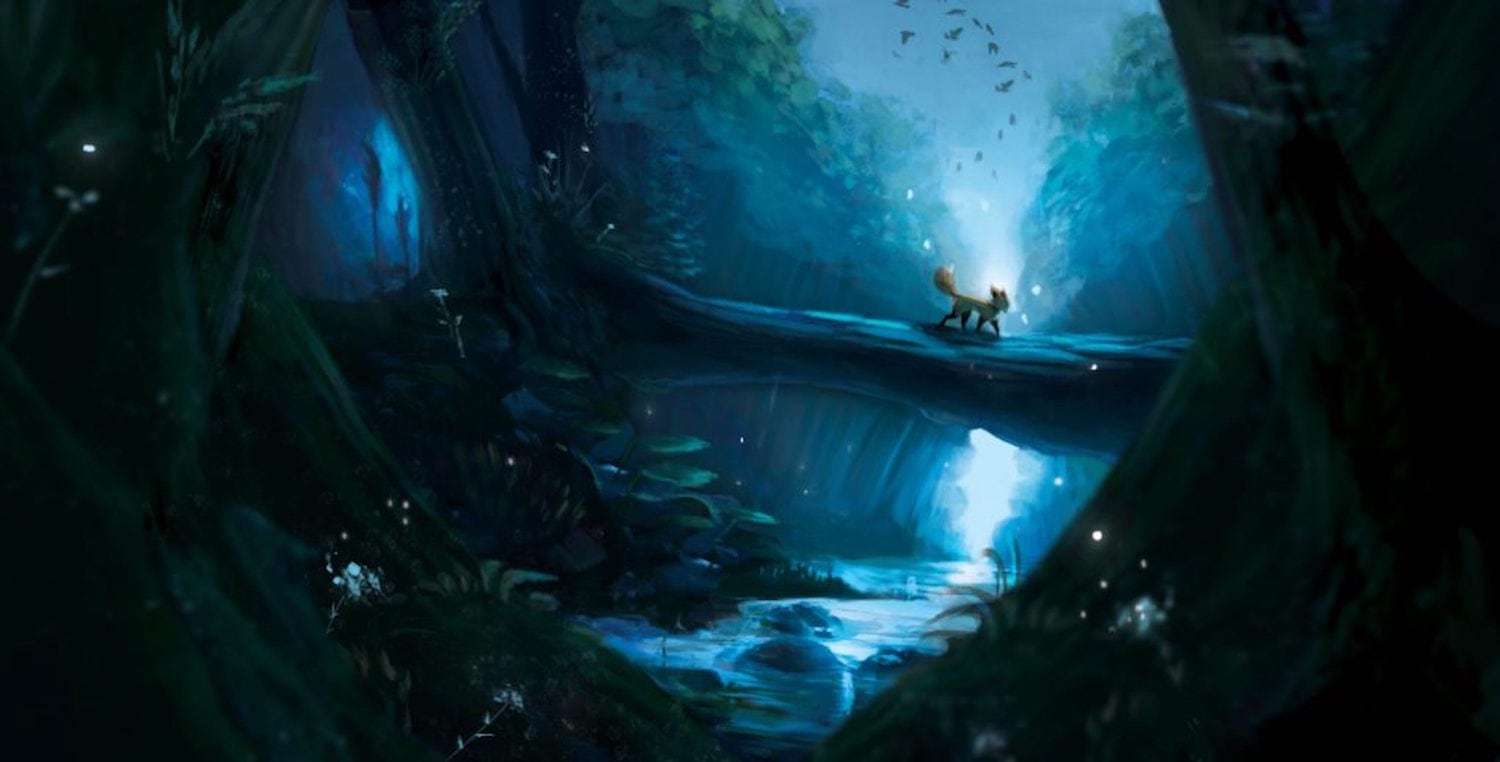
To begin with, it was founded by artists, animators and educators 20 years ago, starting as a 3-year classical animation school. It was, and is, a grassroots college, providing the best possible education at the lowest possible tuition. Not an easy agenda!
What we always had were strong beliefs about education, about how people learn, about the enormous untapped potential that lies dormant in so many people, and about the difference between creative potential and acquired skills. We knew how to create the developmental curriculum that would enable people to express their visions, each in their area of expertise.
All instructors are working professionals, class size is small and everyone gets attention.
We were open to advice from experts. We paid careful attention to curriculum guidelines suggested by Disney and Warner Bros. The content of courses was designed in each case by a working pro who also planned to teach the courses he or she designed.
It was the late 90’s, the beginnings of computer animation, and it didn’t take us long to add 2D (Flash) to the 3-year diploma, and then an additional advanced diploma, a 4th year, in 3D (Maya). Over time this became one 4-year program. We also added a new program, Illustration for Sequential Arts, requested by top comic book pros in Canada and created and developed by them, the only program in Canada offering in-depth training for creating comic books and graphic novels.
We mentor. We know who you are. Our goal is to help you enter the industry you are preparing for.
That program, as of 2018, will also be 4 years long, and now has a slightly different name, Illustration & Storytelling for Sequential Arts.
It’s been expanded to include more computer-based creation, storyboarding, graphic design, and a 2-semester graphic novel seminar course where each student can develop a graphic novel to the point where it can be pitched to a publisher.
The final and newest program is Concept Art for Animation & Video Games. That program is strong because our teaching of traditional, western representational fine art skills is strong, and, once again, the curriculum is developmental and taught by top working pros. It took a year to design. We looked at concept art job descriptions when determining curriculum and also asked for suggestions and criticism of our proposed program from top concept artists.
Why is the work coming out of all programs at this small college so outstanding? I think the answer is a combination of intimacy (small classes where instructors and students get to know each other well), constant attention to adjusting course content to reflect changes in the industries we serve, emphasis on passion, focus, work ethic and professionalism (40% of grading is professionalism, i.e meeting deadlines, taking criticism, polite professional behaviour, being a team player).
It all can be reduced to saying, we care, all of us, about what we are doing and we take real pride in our efforts. We support each other. In the end, isn’t that what it’s really all about?
From the very beginning, people who studied with us got jobs. The story is too long to go into here in full detail, but after starting as a classical animation school with a very strong traditional fine art skills component, we kept growing until we had to move to larger quarters. It was the turn of the century and computer animation was just taking hold.
All our classes and studios are hands on. You are immersed in your program.
We added a computer lab and 2D and then 3D animation. In response to a request from top Canadian comic book artists, we agreed to work with them to develop Canada’s only in-depth comic book and graphic novel program, and then, this time in response to requests from students themselves, we developed the only in-depth concept art program in Canada.
We now offer three separate 4-year diploma programs. We continue to believe that strong traditional representational fine art skills are a necessary component of art based careers: all three programs continue to stress drawing, composition, perspective and structural drawing, colour theory and, for Illustration and concept art students, traditional representational painting.
We consider ourselves the college of opportunity: talent is everywhere and because of small class size and a strong curriculum that teaches basic skills from the ground up, we’re able to accept people with dreams who we feel have potential, passion and a professional attitude but have not had the opportunity to develop their skill base to the level required in order to succeed.
I think that the foundation we offer, and the seriousness with which we approach it, is one of the secrets of our students’ success.
Every applicant gets personal attention and is interviewed either in person or by Skype. We stress community, treating the college like the workplace, treating everyone with respect, and having the attitude and habits of a professional. We care about the environment our students are studying in.
Focus and concentration are critical to skill growth, and we provide an environment that requires all students to arrive on time, concentrate while in class (no talking, no cell phones, no music unless so directed by the instructor), meet deadlines and treat everyone with respect. Our goal is to help every student maximize potential.These are also the demands the workplace will make.
Our programs are intense and require hard work. We need students who are excited about learning and have the grit to take on tough challenges, who will persevere in the face of the inevitable failures all of us experience on the way to success.

In this environment, students discover their own powers and their work just gets better and better.
Class size are small (maximum 15 and frequently fewer). Instructors, working professionals themselves, are able to give individual attention to every student.
There is a feeling of excitement at Max the Mutt that keeps us actively involved and gives us the energy to keep working to ensure that we are constantly appraising what we’re doing and trying to improve any areas that could be better.
Every school is a living organism, always shifting and changing, and needing constant care. There is a real challenge for all of us, students, faculty and administration, to continue caring to be the best we can be. It takes all of us sharing the same vision to make it happen and keep it happening.
Unlike many schools we are aware of, instructors are present in the studio, the curriculum is well developed, and we stress understanding process. This is true throughout the four years of study for animation and concept art, and the three years of study for sequential arts.
We care about the environment you are studying in. Focus and concentration are critical to your skill growth, and we provide an environment that requires all students to arrive on time, concentrate while in class (no talking, no cell phones, no music unless so directed by the instructor), meet deadlines and treat everyone with respect. These are the demands the workplace will also make. Once students have developed these habits, they see their work improve and are motivated to continue to apply themselves in a serious way.
We are a Career College, not a university. I believe in liberal arts education, but to do that and also offer a serious education in visual arts fields, we would need 6 or 7 years, not 4 years.
For those who attend Max the Mutt and want a degree, we have an articulation agreement with Daemen College, Amherst, New York. Our diploma holders who have academic high school diplomas and a 70% average can complete a BFA at Daemen with one additional year of study.
And last, but not least, Toronto is a major hub for visual and sequential arts, the most international city in North America. Our students and instructors are from many backgrounds, countries, and educational backgrounds. This creates a great exchange of ideas and inspires creativity.
We are a good school for serious, focused students who are ready to deal with a heavy workload and passionate about what they are studying.




